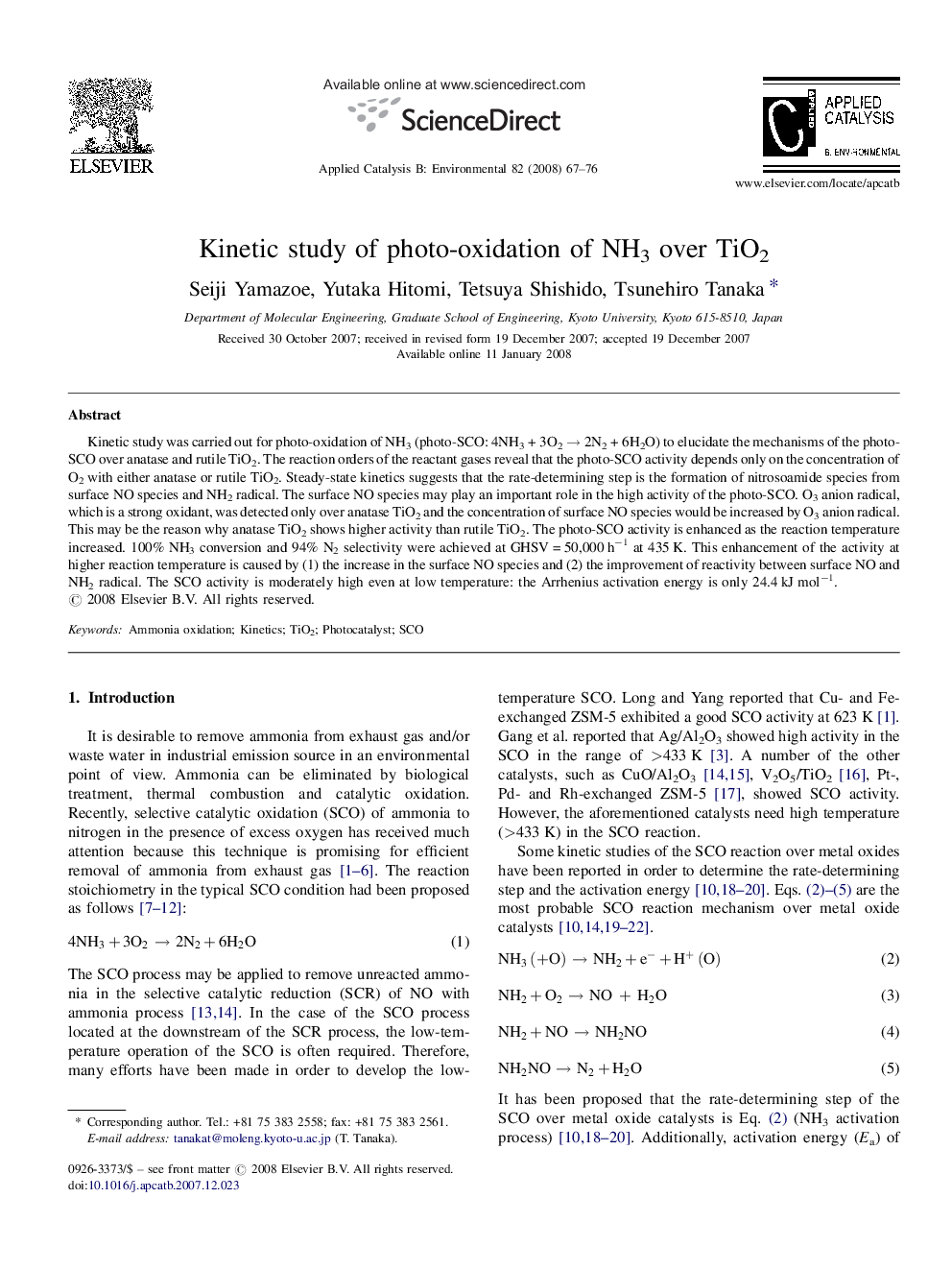| Article ID | Journal | Published Year | Pages | File Type |
|---|---|---|---|---|
| 48262 | Applied Catalysis B: Environmental | 2008 | 10 Pages |
Kinetic study was carried out for photo-oxidation of NH3 (photo-SCO: 4NH3 + 3O2 → 2N2 + 6H2O) to elucidate the mechanisms of the photo-SCO over anatase and rutile TiO2. The reaction orders of the reactant gases reveal that the photo-SCO activity depends only on the concentration of O2 with either anatase or rutile TiO2. Steady-state kinetics suggests that the rate-determining step is the formation of nitrosoamide species from surface NO species and NH2 radical. The surface NO species may play an important role in the high activity of the photo-SCO. O3 anion radical, which is a strong oxidant, was detected only over anatase TiO2 and the concentration of surface NO species would be increased by O3 anion radical. This may be the reason why anatase TiO2 shows higher activity than rutile TiO2. The photo-SCO activity is enhanced as the reaction temperature increased. 100% NH3 conversion and 94% N2 selectivity were achieved at GHSV = 50,000 h−1 at 435 K. This enhancement of the activity at higher reaction temperature is caused by (1) the increase in the surface NO species and (2) the improvement of reactivity between surface NO and NH2 radical. The SCO activity is moderately high even at low temperature: the Arrhenius activation energy is only 24.4 kJ mol−1.
